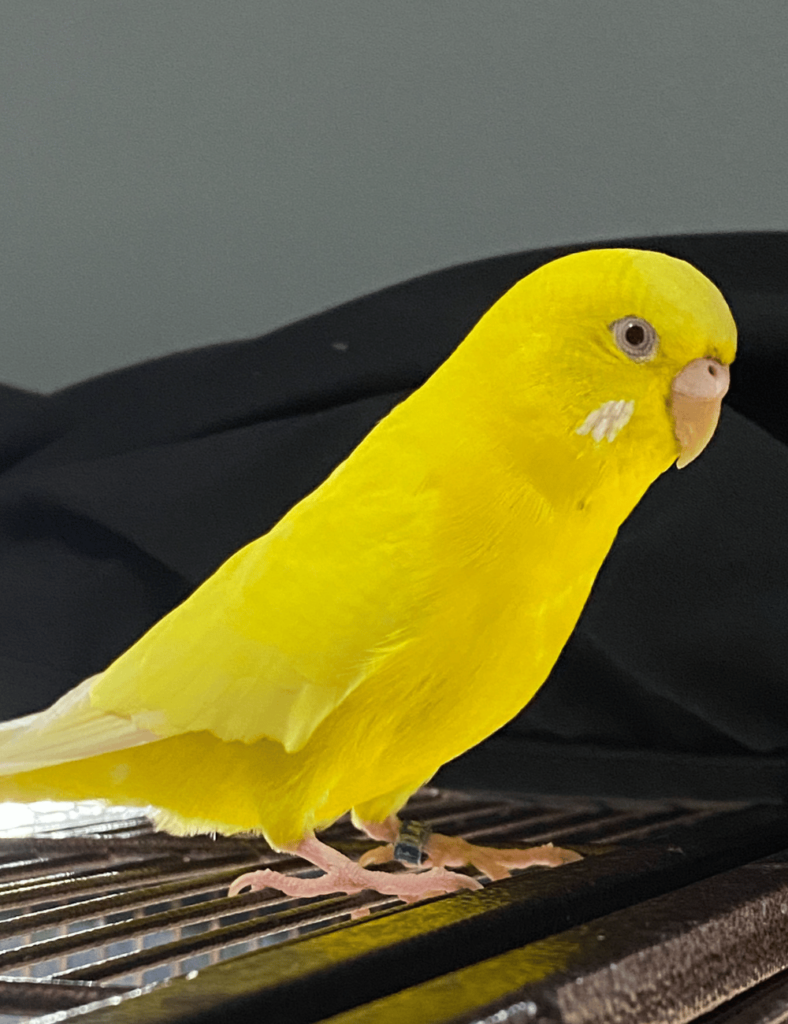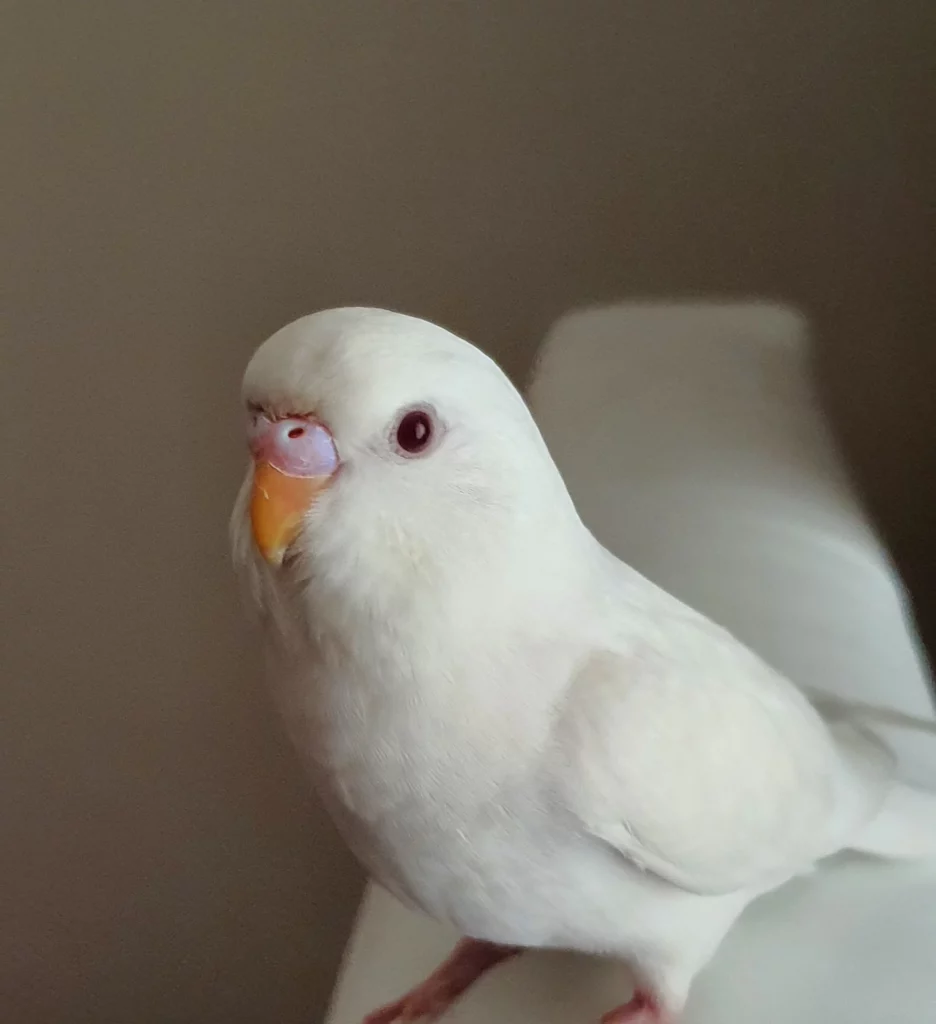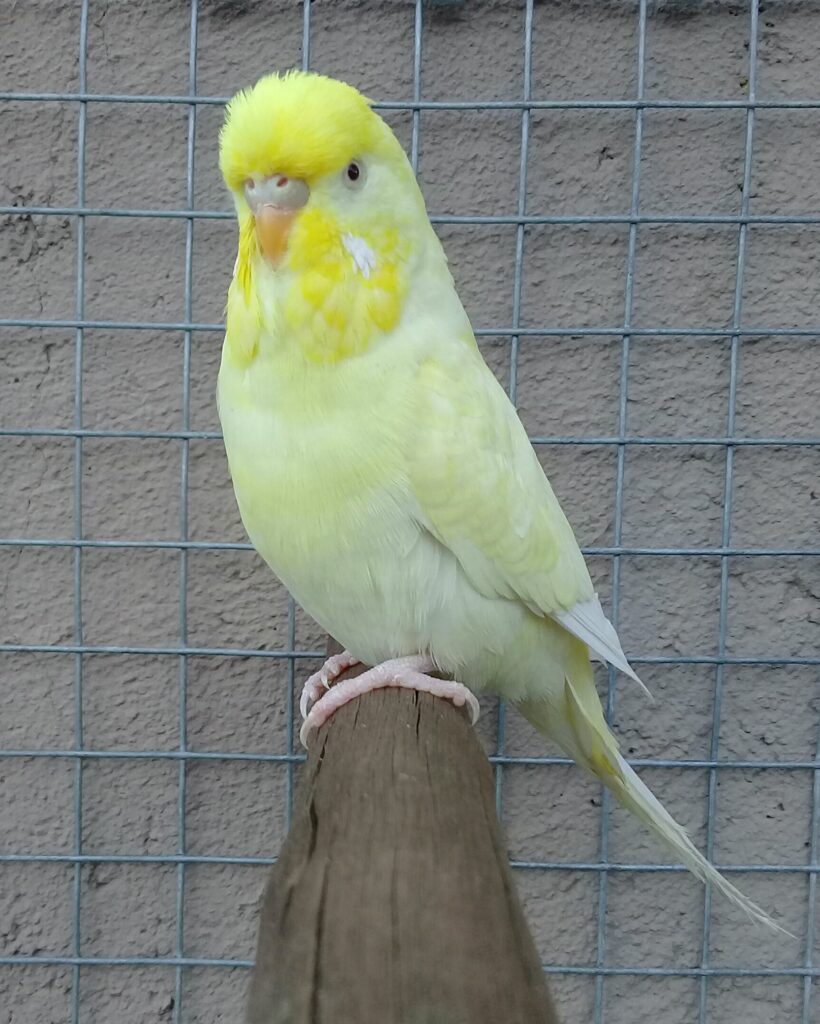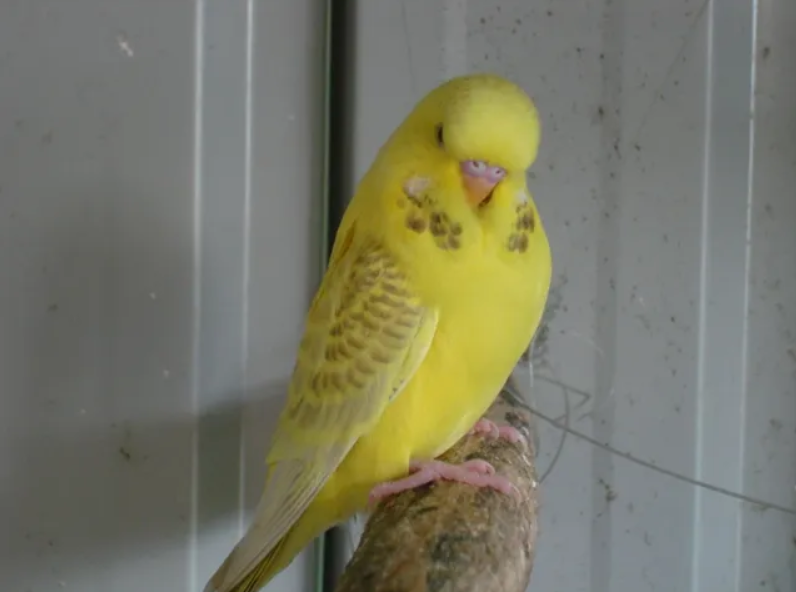First discovered in a Belgian aviary in the 1880s, Lutinos were originally called “goldens” and were poorly understood. Parrot mutations were so unknown at this time that a rumor caused breeders to partially boil their bird’s eggs in hopes they would hatch “golden”. This original mutation died out shortly after, but reappeared in several European countries and Australia in the early 1930s.
In their pure form, they are completely yellow with red eyes. When they were first combined with blue, they were given the name Albino due to their traditionally albinistic look: a white body with red eyes (pictured second). Following this trend, Lutinos combined with a yellowface mutation are called Creaminos (pictured third). Finally, when Cinnamon is added to the mix, a Lacewing is produced; A very light-colored, red-eyed bird with faint brown markings (pictured fourth). They were first bred in 1948 and believed to be poor-quality Lutinos, though some breeders thought they were a new mutation. In 1981, they were finally discovered to be Cinnamon Lutinos. Interestingly, several lines of Lacewings bred in South Africa naturally have darker markings, potentially due to certain mutations used to breed them.





